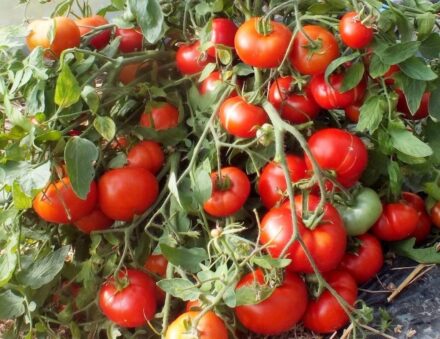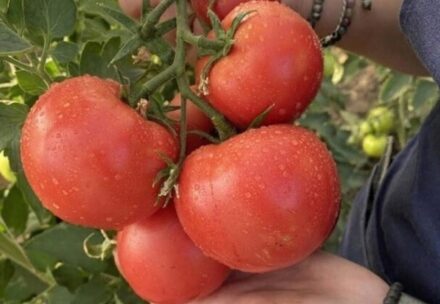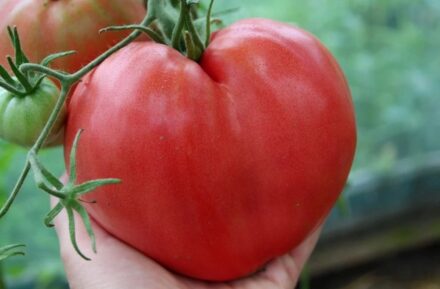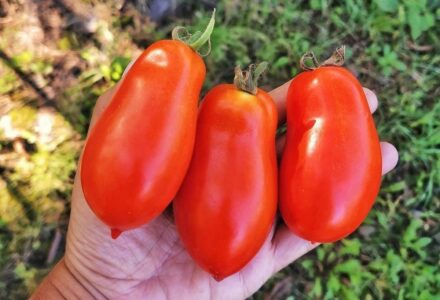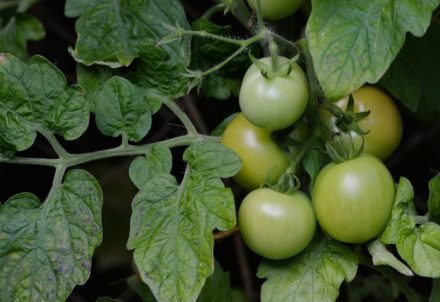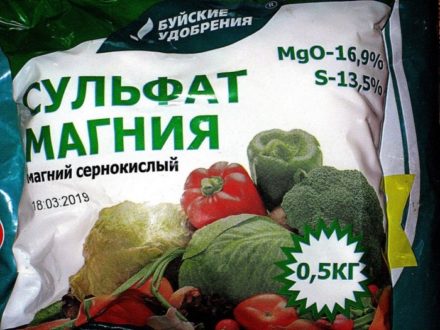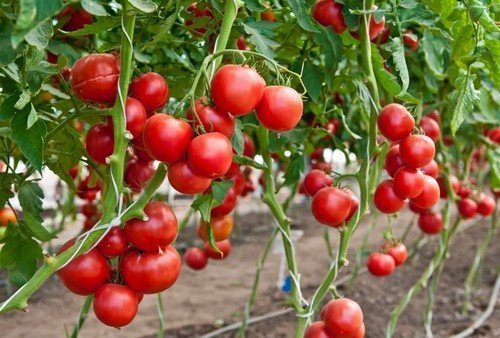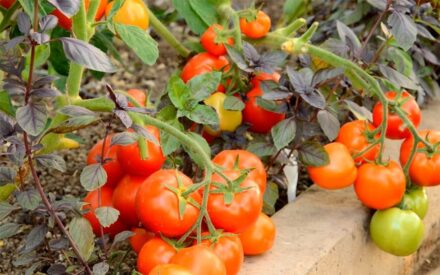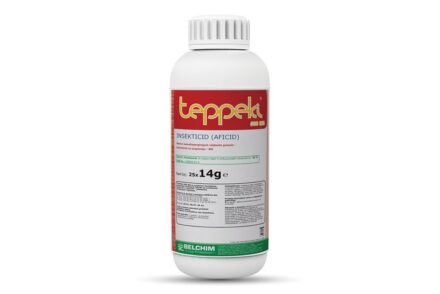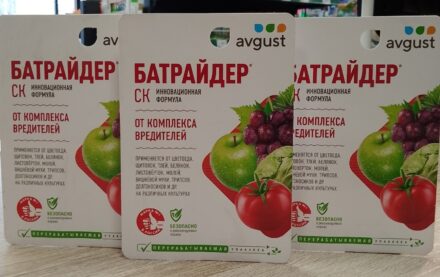According to gardeners, the Flame F1 tomato is one of the best varieties today. It combines all the necessary qualities: good yield, interesting appearance, excellent taste, resistance to nightshade diseases. Among other hybrids, it is recognizable by its bright color, reminiscent of a flame.
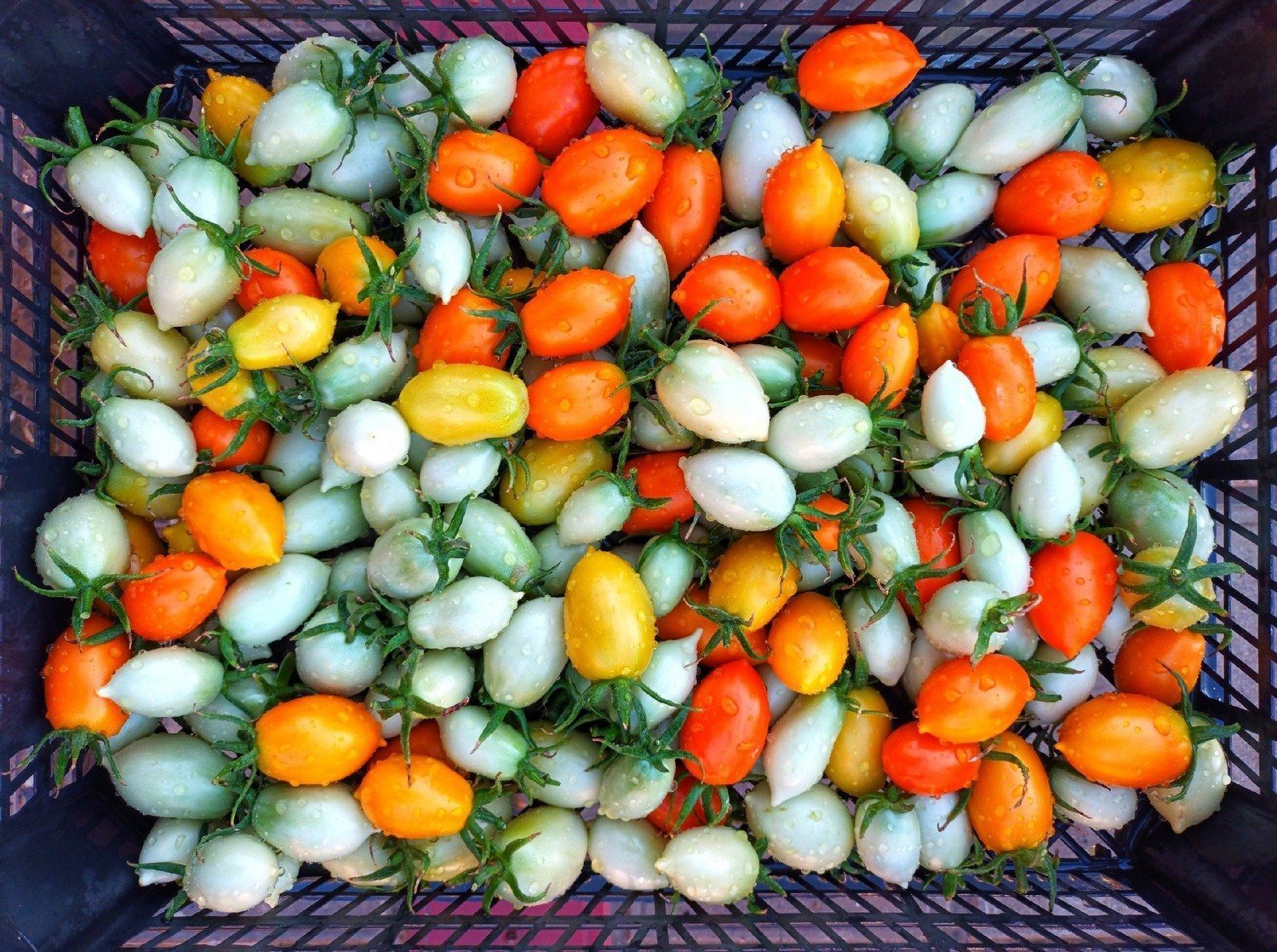
- History of selection
- Description and characteristics
- Photo
- Productivity
- Resistance to pests and diseases
- Ways to use tomatoes
- Agricultural technology
- How to plant
- Growing
- Harvesting
- Advantages and disadvantages
- Reviews
History of selection
The author of the hybrid “Flame F1” is a scientist from Novosibirsk, breeder Blokin-Mechtalin V.I. The variety has been approved for use since 2019 and was immediately included in the State Register. The early determinate variety is intended for cultivation in greenhouses and hotbeds, but due to its tolerance to changes in summer temperatures, it is also cultivated in open ground.
The F1 mark warns gardeners that the best characteristics are the prerogative of only one generation. Collected and planted seeds will no longer inherit the qualities of the mother culture.
The following regions are recommended for cultivation: Northern, North Caucasian, Northwestern, Central, Central Black Sea Region, Middle and Lower Volga, Volga-Vyatka, Far Eastern, Western and Eastern Siberian.
Description and characteristics
Determinate variety. As soon as several tassels are tied, growth stops. The tomato variety has a voluminous trunk and lush shoots, where numerous foliage is located.
Due to their low height, tomato bushes do not require pinching or support. Although they successfully cope with temperature changes and lack of natural light, the planting site is selected carefully. The best option is partial shade without heat, winds and drafts. The recommended planting density is 5 bushes per square meter.
The advantage of tomatoes of the Flame F1 variety is their long shelf life and resistance to rotting. The shelf life of tomatoes in a cool corner is about 30 days. Tomatoes are eaten not only fresh, but also salted, pickled, and consumed in the form of juices and sauces. The tasting rating of “Flame F1” tomatoes is 4.8 out of 5 possible.
| Bush category | Hybrid |
| Bush type | Medium height, determinate |
| Type of bush | Compact, medium height |
| Growing season | Early variety, up to 85–90 days |
| Stem height | 90–120 cm |
| Leaves | Short but large; cut, green with a little fluff |
| Fruit | Elliptical, slightly ribbed shape. The skin is loose, with an orange or red tint, the flesh is dense, pleasant consistency, juicy, fragrant |
| Weight of tomato | 60 – 80 g |
| Taste | Sweet with a little sourness |
| Fruiting | 14.1 kg per sq. meters |
| Place of cultivation | Open ground; greenhouses |
Photo
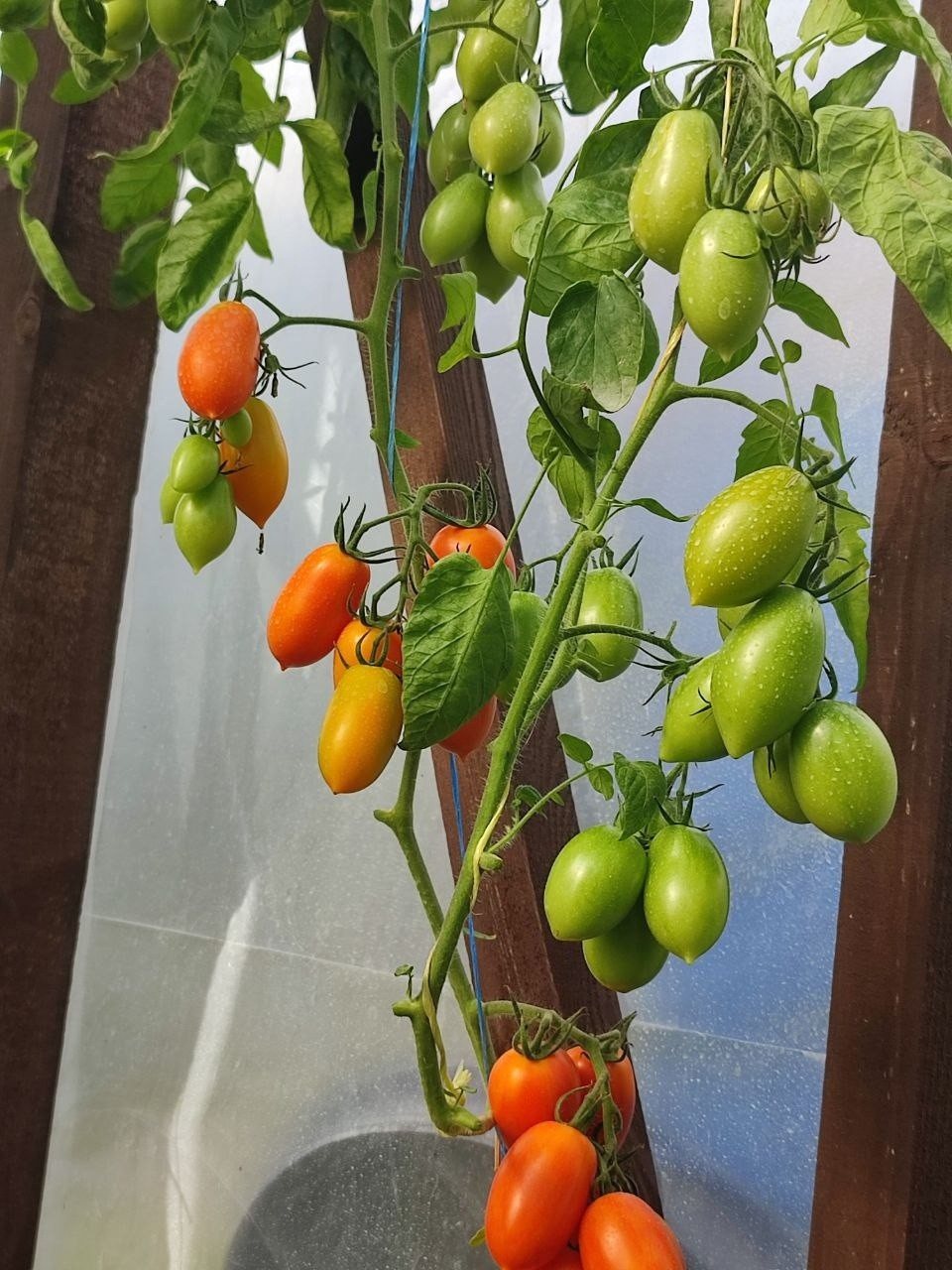
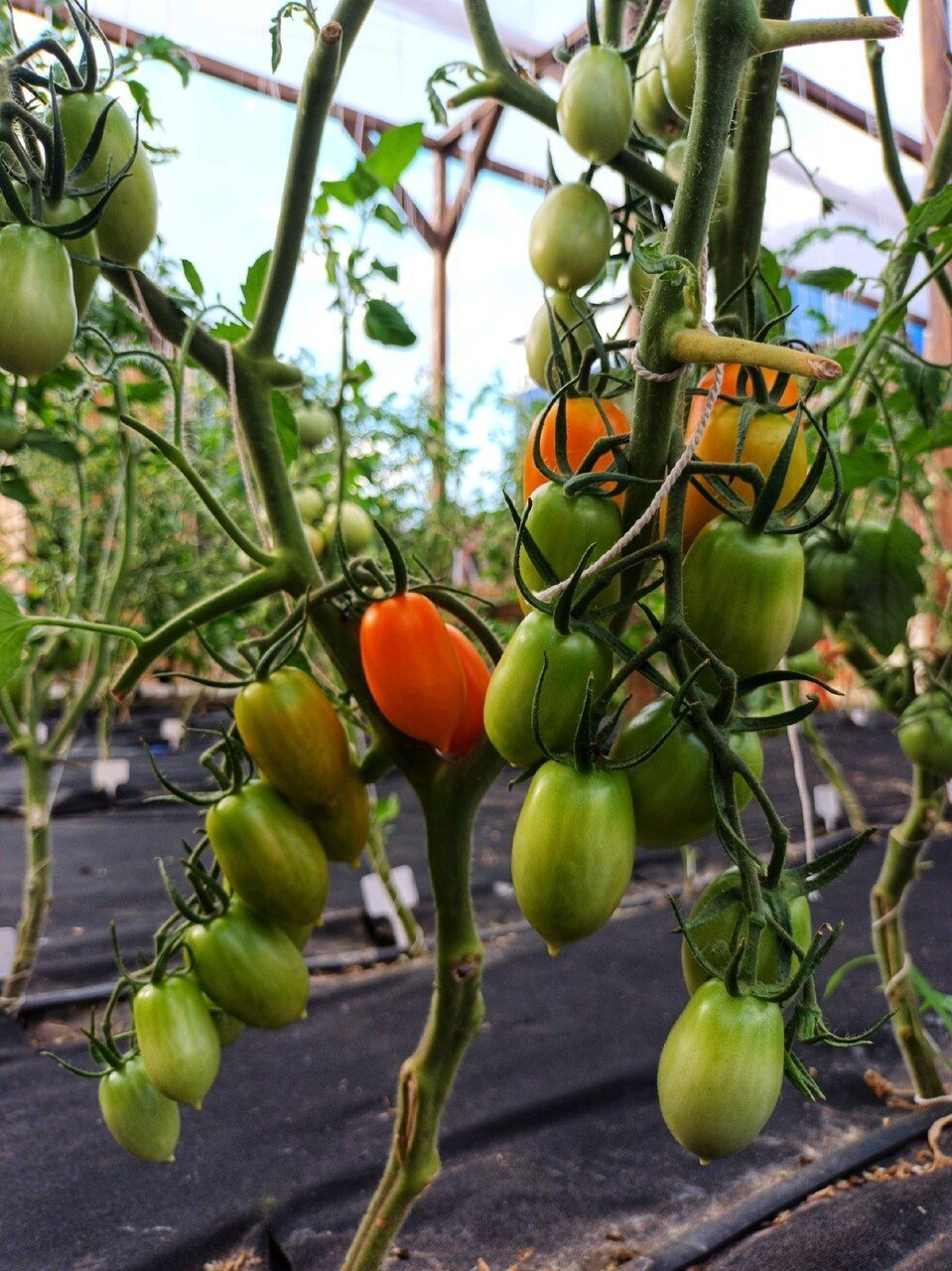
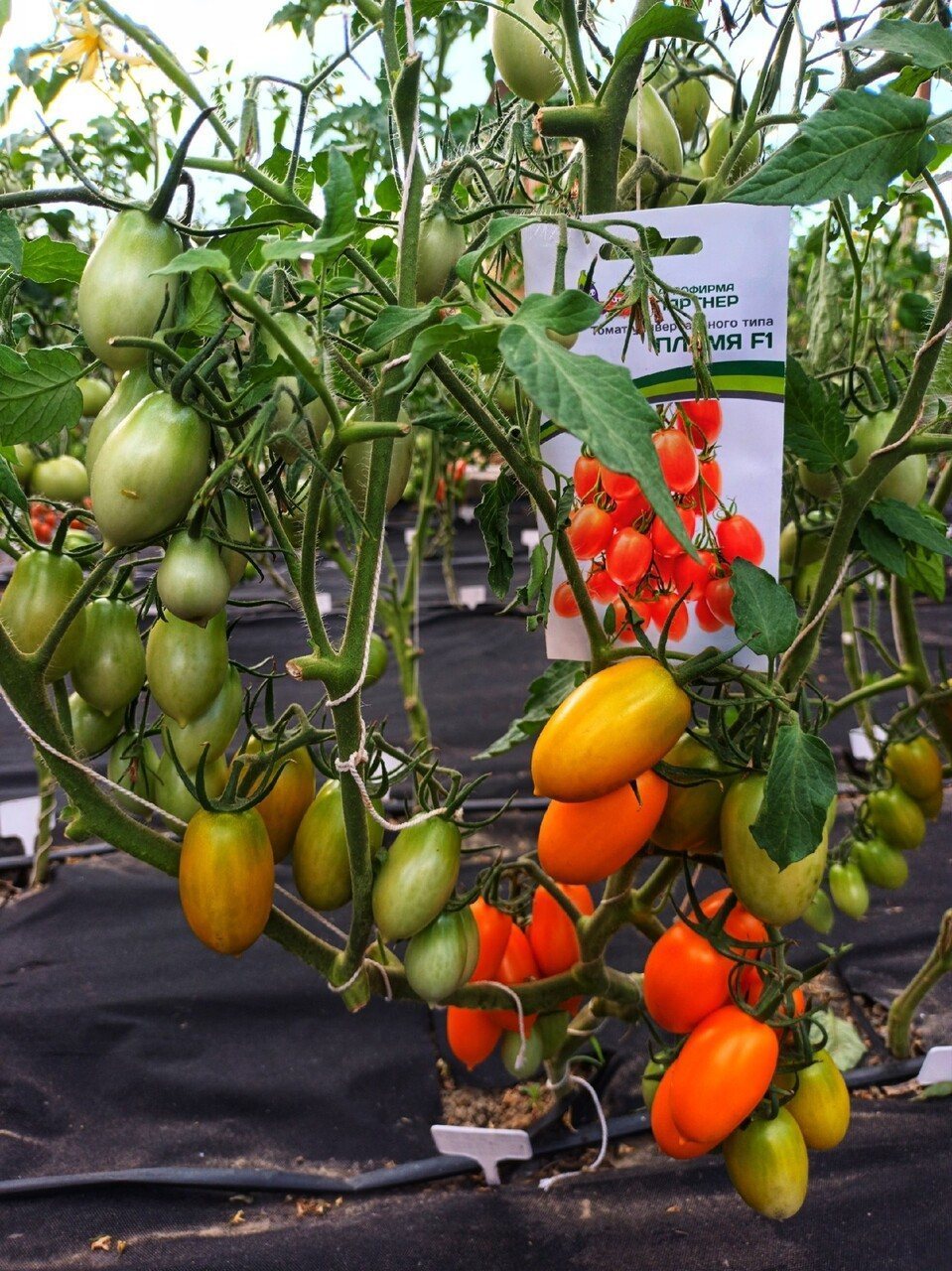
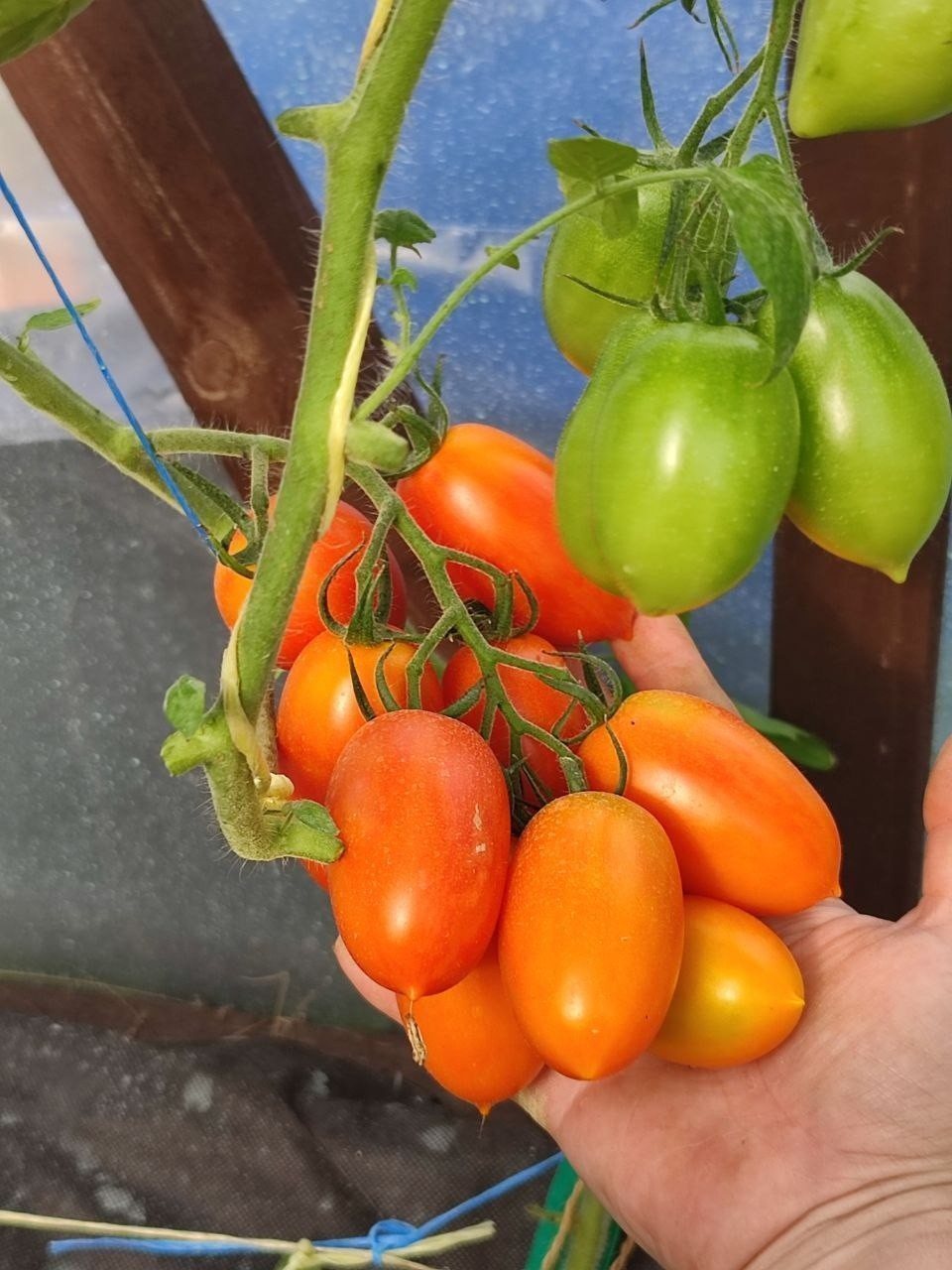
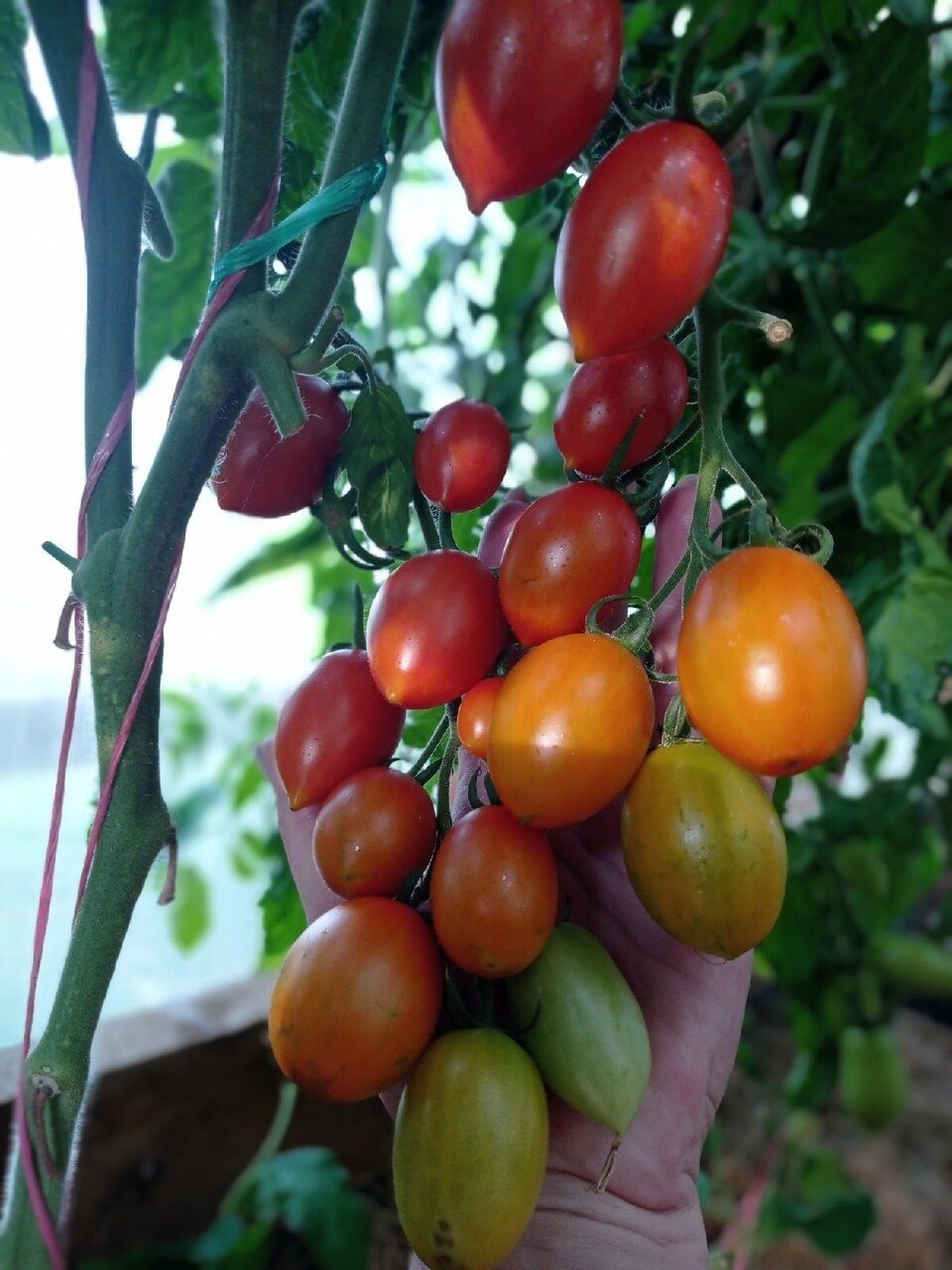
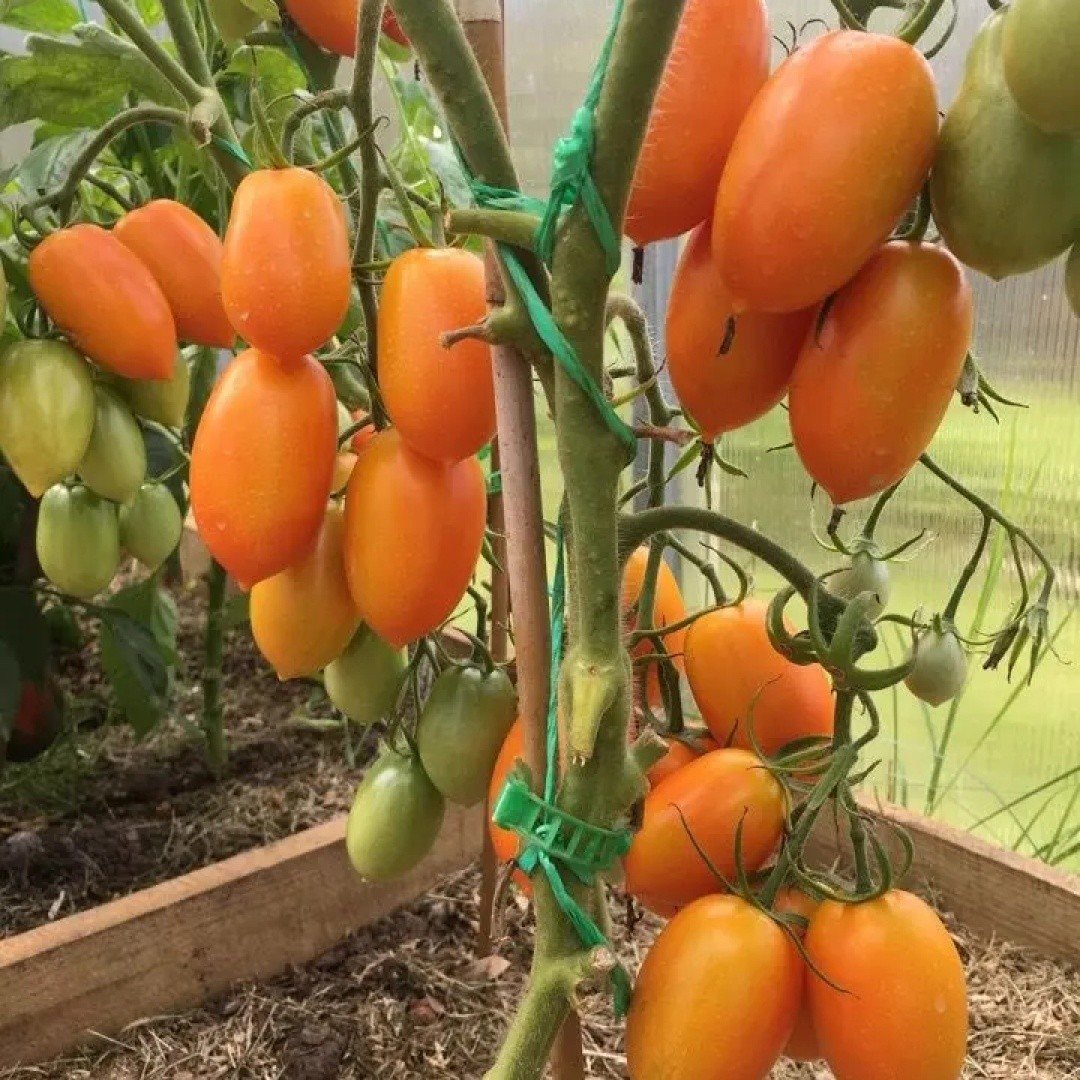
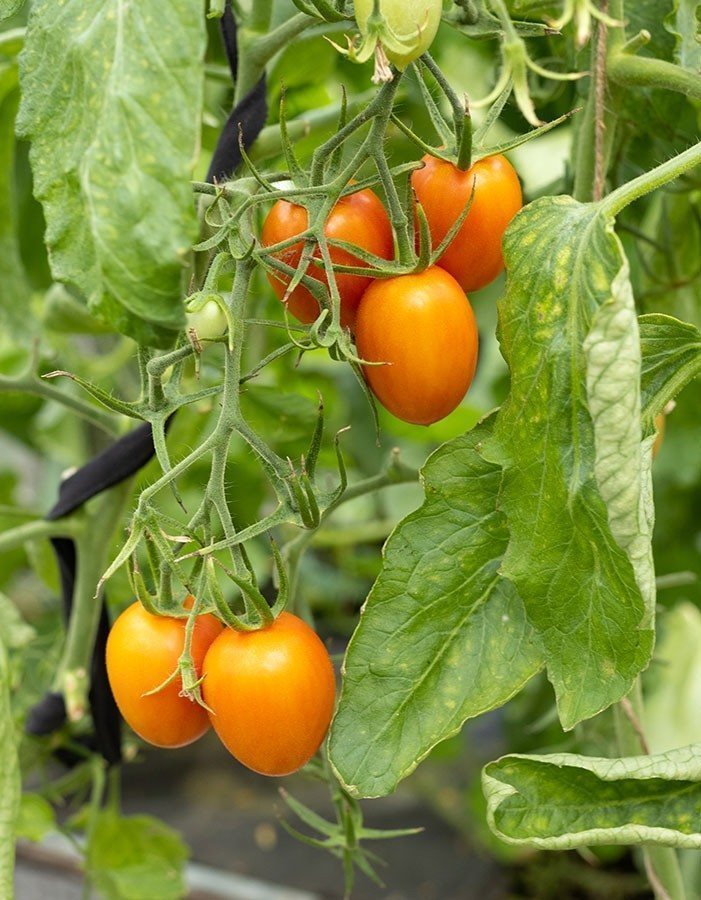
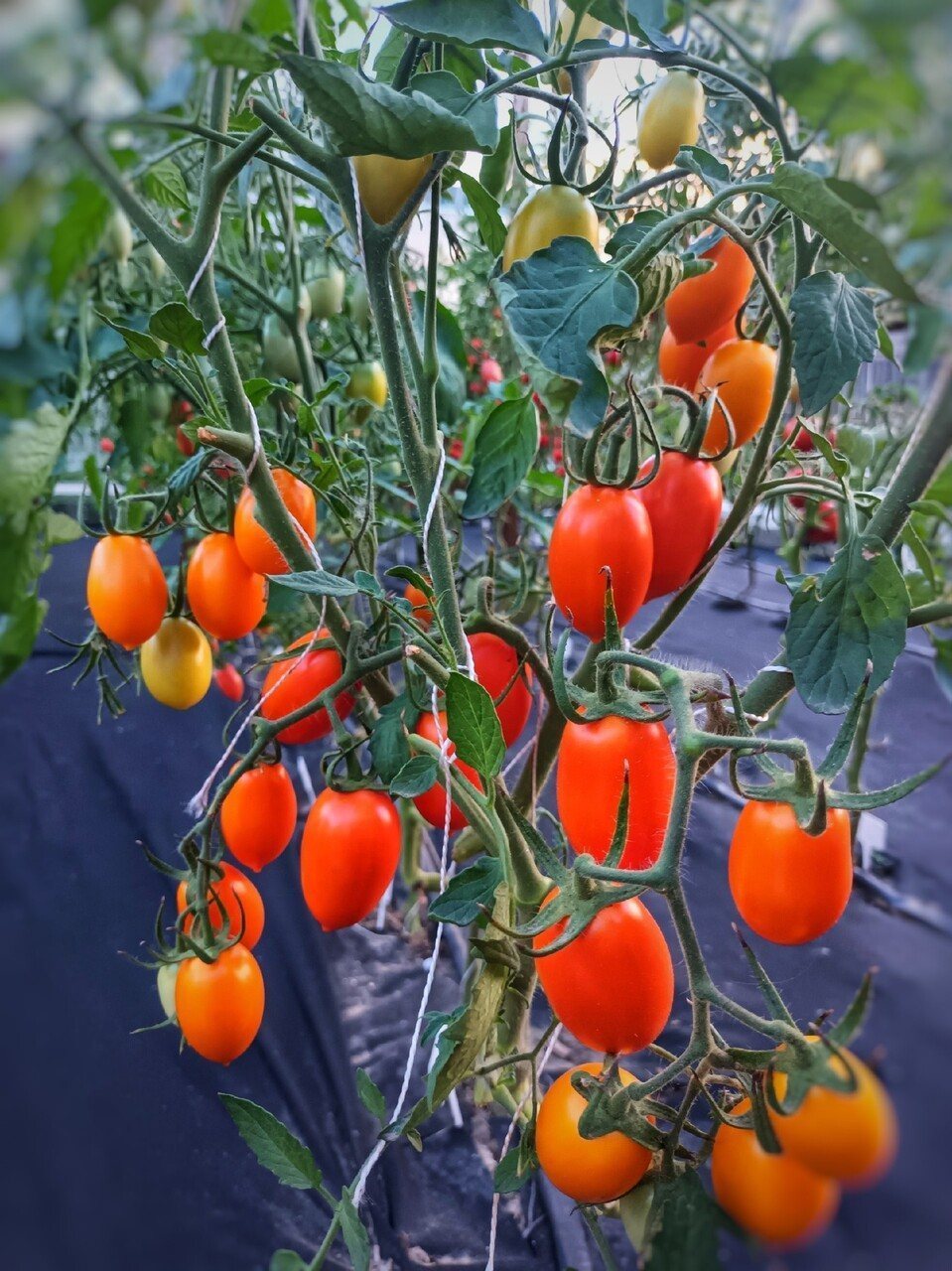
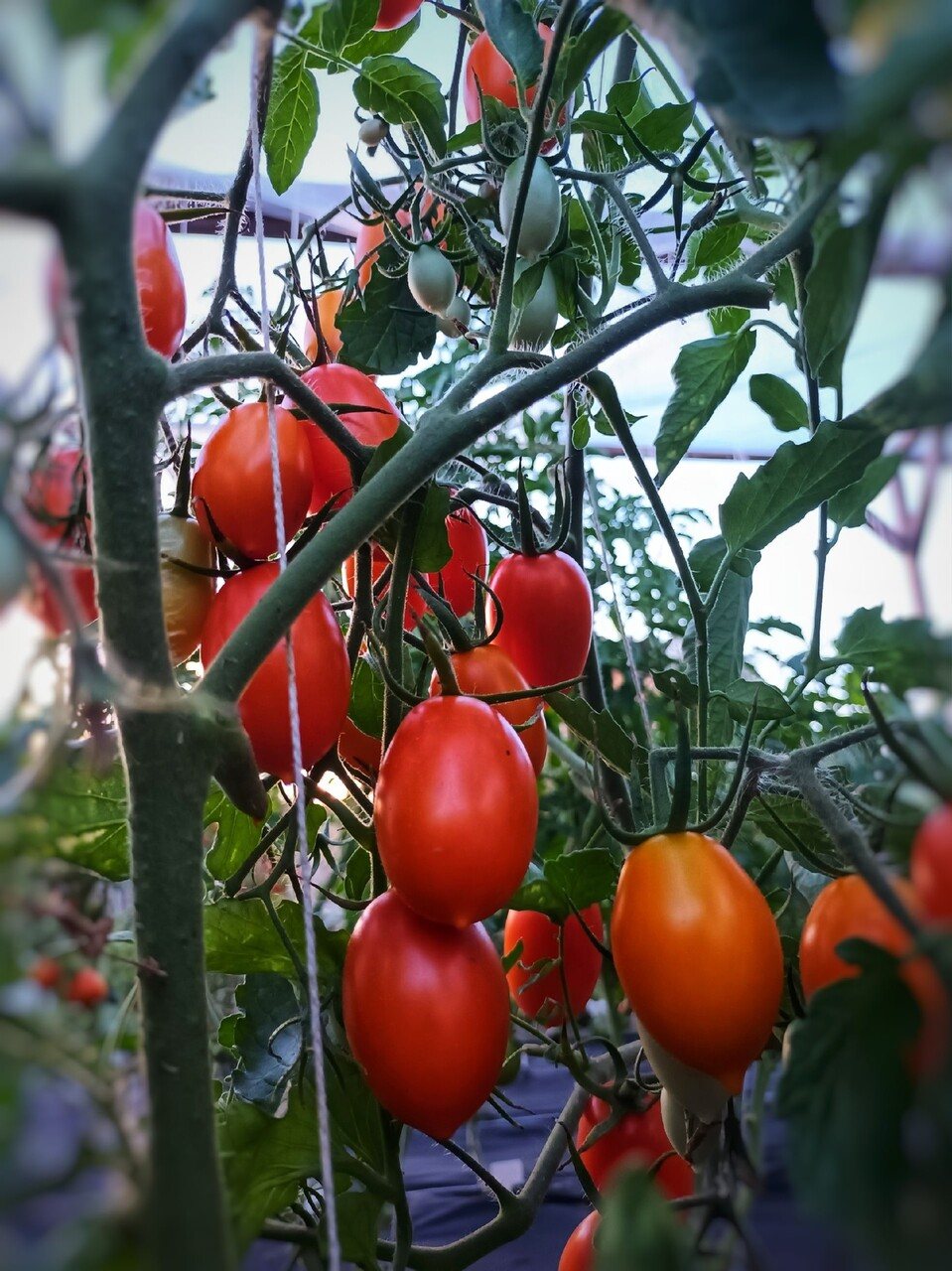
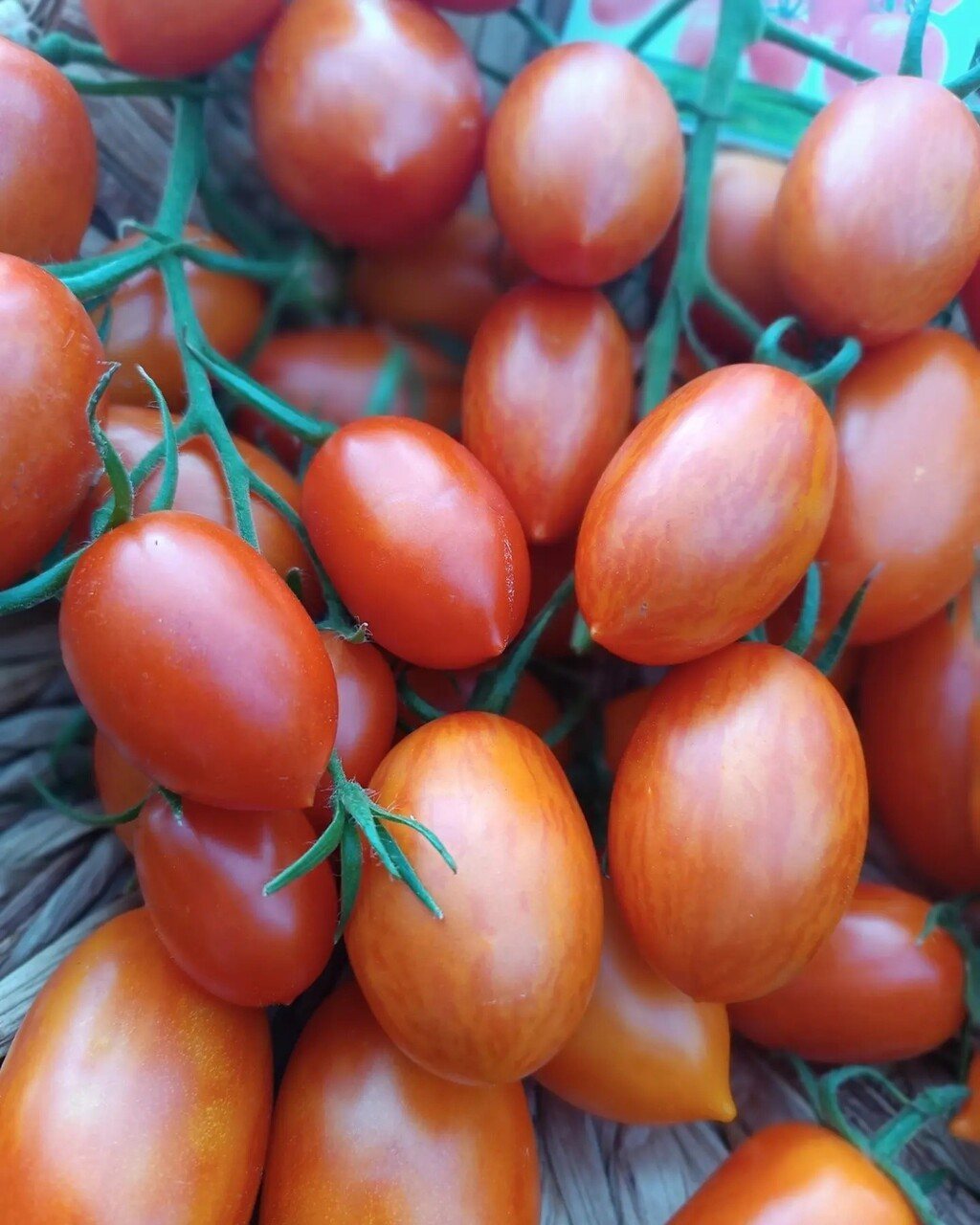
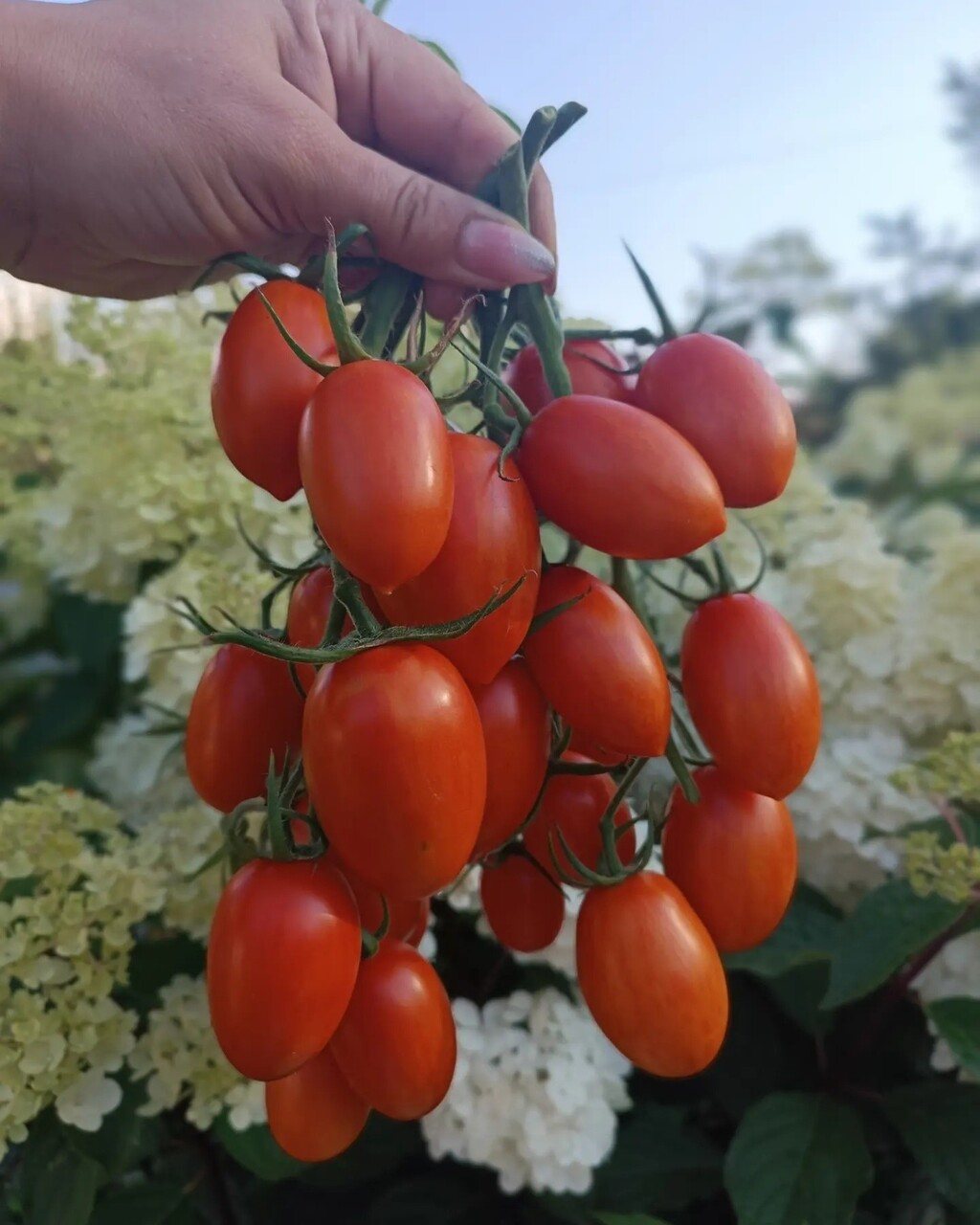
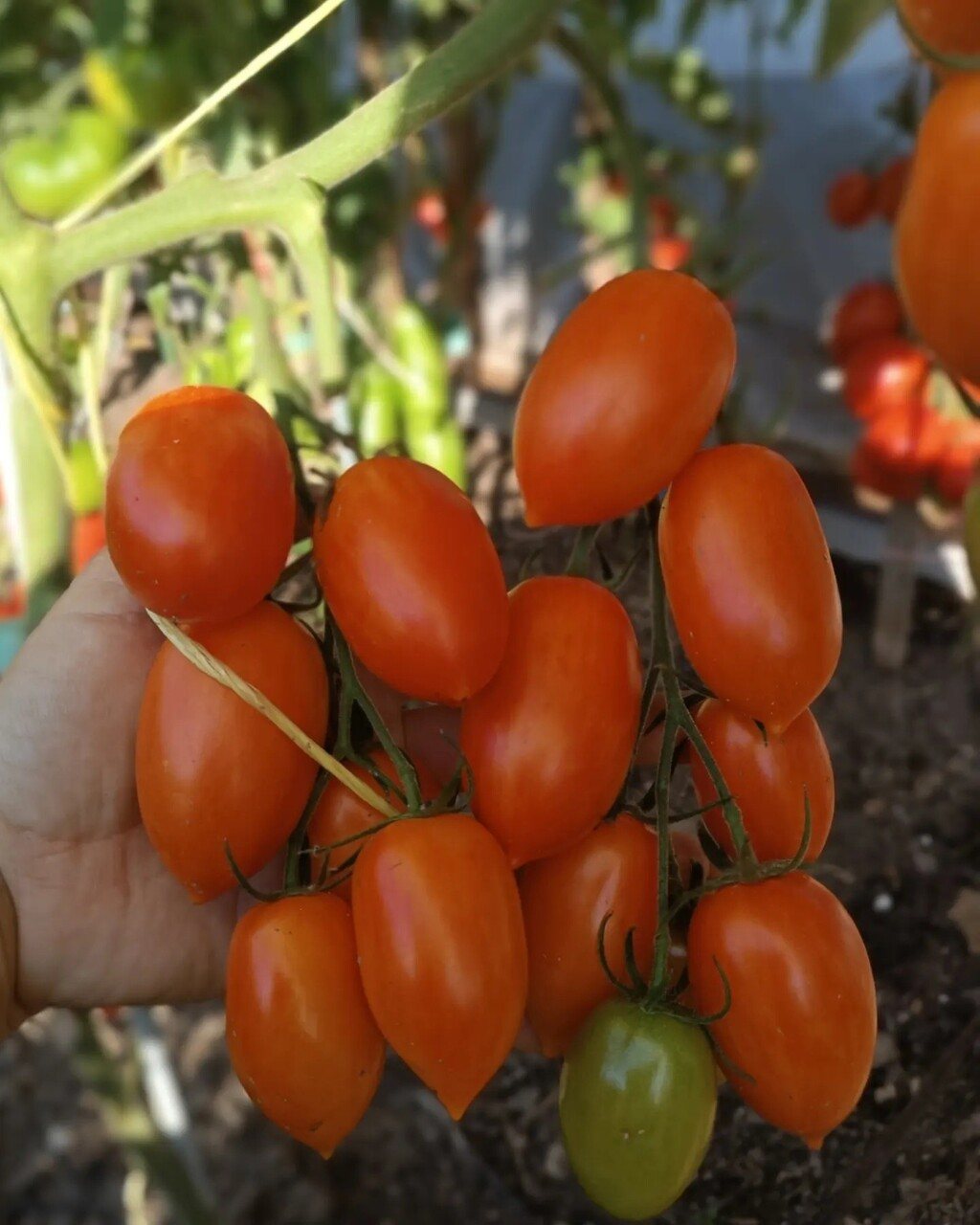
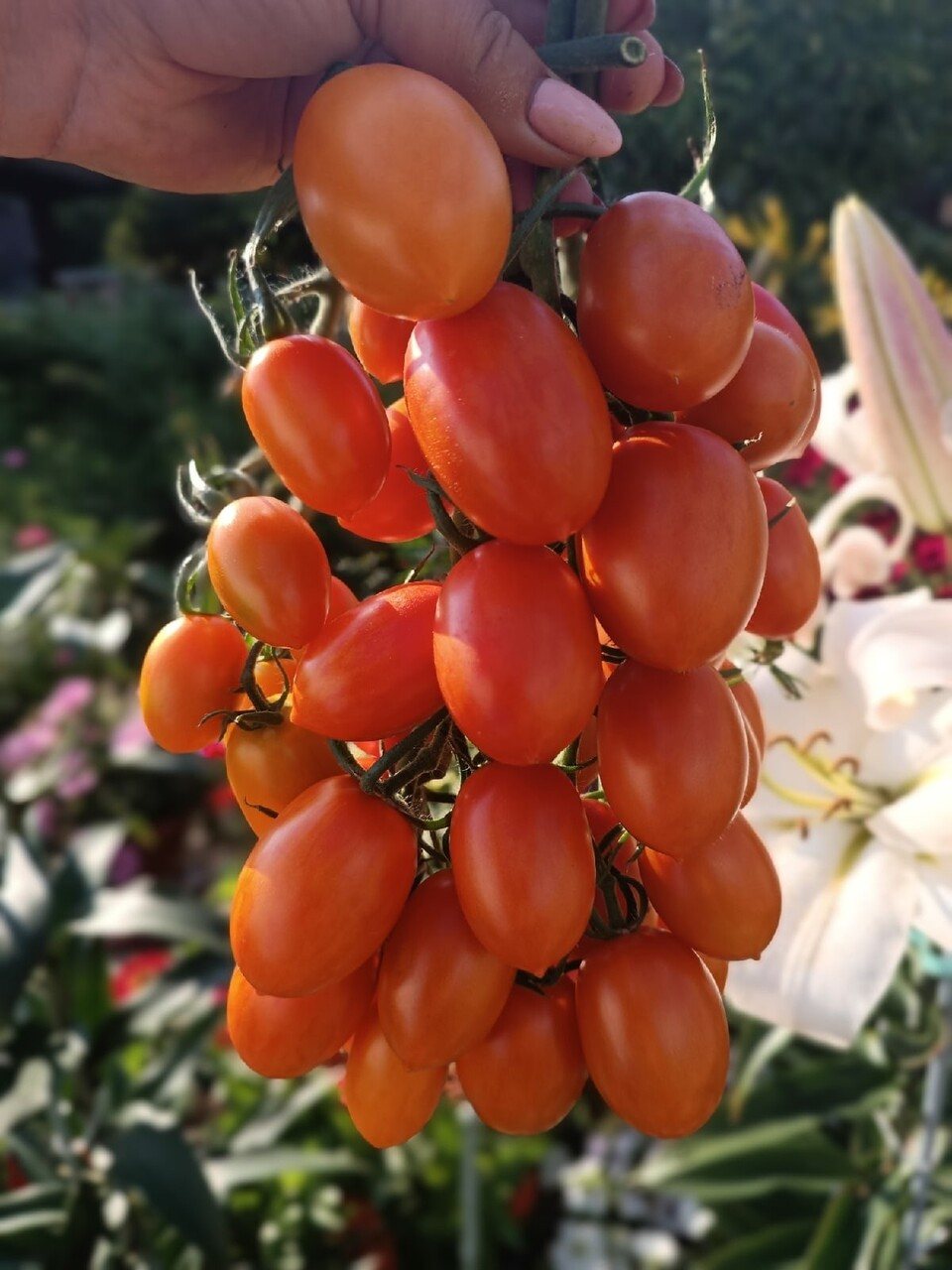













Productivity
It should be noted that the fruits are ripening smoothly. The weight of each varies from 60 to 80 g. Therefore, from 1 sq. per meter, at least 13–14 kg of tomatoes are harvested.
Resistance to pests and diseases
The variety has strong immunity to most nightshade diseases. In addition, early ripening saves the crop from late blight.But if it so happens that a disease has struck, then the fight against fungi and infections is carried out with insecticides: Tridex, Ridomil, Ditan, Trichopolum and Metaxil.
Insecticides with a paralytic effect, such as Lazurit, Sukhovey, Tornado, Escudo, will help get rid of pests. For those gardeners who do not welcome chemicals, spraying with garlic and onion infusions is recommended. And as a barrier against pests, pour ash, sand, and soda under the bushes.
Ways to use tomatoes
The area of use of Flame tomatoes is quite wide. Many people grow tomatoes for sale. They look good and withstand transportation, and they appear at the beginning of summer, when other varieties have not yet ripened.
Others consume the fruits fresh, use them in salads, and stuff them. Of course, they make preparations for the winter, salt, marinate, prepare tomato paste, ketchups, and juices.
And yet, due to the early ripeness of the Flame F1 variety, the shelf life of the fruit is short. And it’s better to process the tomatoes right away.
Agricultural technology
“Flame F1” tomatoes are grown using seedlings, which, when stable above-zero temperatures occur, are transferred to open soil or a greenhouse.
How to plant
Due to the early ripeness of the crop, seeds are sown for seedlings 50–55 days before transplanting to a permanent place. Before sowing, the seeds are disinfected in a manganese solution, then washed and dried. If desired, soak in a growth stimulator. Thanks to preparation, there will be no problems with the development and formation of immunity to nightshade diseases.
The seedlings are grown in light fertile soil containing peat, coarse sand and garden soil, taken in equal parts. Common planting boxes or individual peat pots are used. A drainage layer is placed on the bottom. Two seeds are placed in a cup. Grooves are made in the common box, where the seeds are placed at a distance of 3 cm from each other and to a depth of 1 cm.
Care is taken in the usual way. Cover with glass, place in a lighted place. Regularly ventilate and water. As soon as friendly shoots appear, the shelters are removed, and the tomatoes begin to harden.
Growing
The seedlings are transferred to open ground in the second half of May. By that time, the soil will warm up to a temperature of 16 ° and above, and frosts are unlikely to return. Choose a cloudy day, but windless and warm. The beds are dug up, the soil is doused with boiling water or watered with a solution of manganese for disinfection. Fertilizers and humus are added. The seedlings are planted in a draft-free area. The plantings are shaded from the bright sun.
Care includes weekly watering with warm water. Weeding and loosening. Three times a season, feed with mineral compounds with calcium and phosphorus. Nitrogen fertilizers are used only at the beginning of the growing season.
Harvesting
From the appearance of the first shoots to harvesting, 85-90 days pass. The fruits are collected before the initial frosts. A prerequisite is timely collection, until the tomatoes are covered with rot and overripe. Even picking green fruits is allowed. But then they ripen on the windowsill. Advantages and disadvantages
Like any vegetable plants, tomatoes "Flame F1" have positive and negative features.
Advantages:Seedlings are grown in light fertile soil containing peat, coarse sand and garden soil, taken in equal parts. Use common planting boxes or individual peat pots. A drainage layer is placed at the bottom. Place two seeds in a glass. Grooves are made in a common box, where the seeds are placed at a distance of 3 cm from each other and to a depth of 1 cm.
Take care in the usual way. Cover with glass and place in a bright place. Regularly ventilate and irrigate. As soon as friendly shoots appear, the shelters are removed, and the tomatoes begin to harden.
- Growing
- The seedlings are transferred to open ground in the 2nd half of May. By that time, the soil will warm up to a temperature of 16° and above, and frost is unlikely to return. Choose a cloudy day, but windless and warm. The beds are dug up, the soil is doused with boiling water or watered with a manganese solution for disinfection. Add fertilizing and humus. The seedlings are planted in a draft-free area. Plantings are darkened from the bright sun.
- 6 mistakes in pickling tomatoes for the winter that jeopardize not only the taste, but also the safety
- Care includes weekly watering with warm water. Weeding and loosening. Three times a season they are fed with mineral compounds with calcium and phosphorus. Nitrogen fertilizers are used only at the beginning of the growing season.
- Harvesting
- From the appearance of the first shoots to harvesting, 85–90 days pass. Harvest the fruits before the initial frost. A prerequisite is timely harvesting, before the tomatoes are covered with rot and are not overripe. Even the removal of green fruits is allowed. But then they ripen on the windowsill.
- Advantages and disadvantages
- Like any vegetable plants, “Flame F1” tomatoes have positive and negative traits.
- Advantages:
compactness of bushes;
unpretentiousness to growing conditions;
fruiting even with a lack of sun;
excellent taste and product quality;
Fitosporin-M


